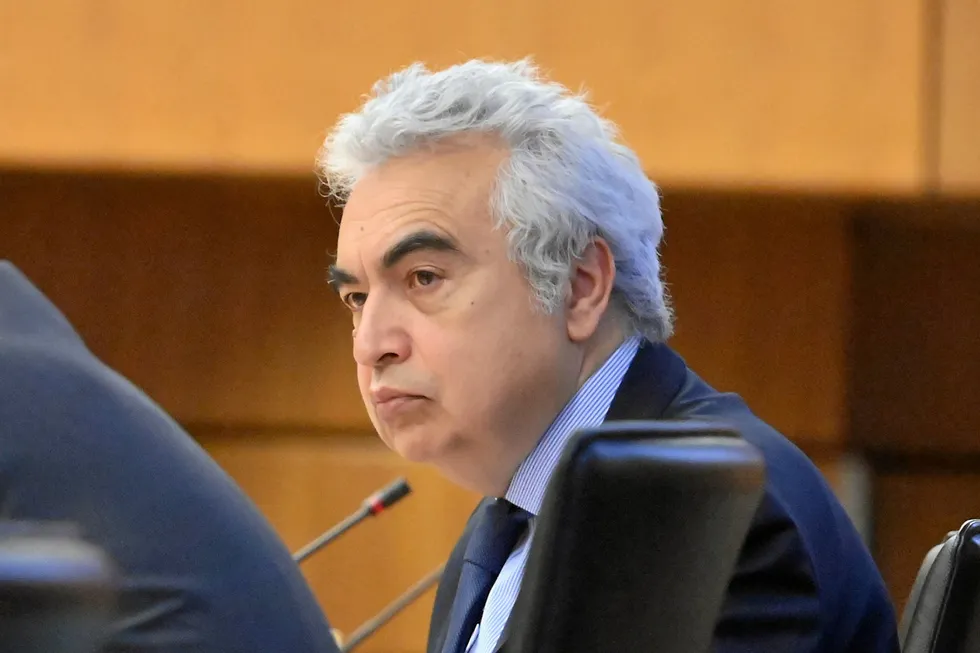Green hydrogen production will grow more slowly than expected everywhere apart from China, says IEA
Agency predicts 45GW of new wind and solar will be installed to produce renewable H2 by 2028

The International Energy Agency (IEA) has drastically cut its estimates for how much new wind and solar will be built to power green hydrogen production over the next five years, implying that less renewable H2 will be produced than previously expected.
Stay ahead on hydrogen with our free newsletter
Last year’s edition had predicted 50GW of hydrogen-linked renewables would be installed by the end of 2027.
Even in an accelerated case — where further government support kicks in to bring projects to financial close — the IEA projects 85GW by the end of 2028, compared to 90GW in 2027 predicted in last year’s report.
“We have revised down our forecasts for all regions except China,” the IEA notes in its report, with the Asian nation expected to account for 70% of installations in the coming year.
It adds: “The main reason is the slow pace of bringing planned projects to final investment decisions due to a lack of off-takers and the impact of higher prices on production costs. The development of an international hydrogen market is a key uncertainty affecting the forecast, particularly for markets that have limited domestic demand for hydrogen.”
IEA estimates 360GW of announced projects up to 2030, but only 12GW had reached a final investment decision or started construction.
The agency also notes that “project development in several markets has been affected by delays in electrolyser shipments due to backlogs in manufacturing plant orders and, in some cases, by malfunctioning equipment”.
“China is the only market where the pace of growth is likely to come within reach of announced goals,” the report notes.
The agency also points out that this forecast would also be in line with the capacity needed to meet targets set out by China’s provinces for 2025 and 2030, which cumulatively exceed the national government’s goal.
“Early electrolyser deployment in this country will be mostly from state-owned enterprises developing projects to meet provincial and national hydrogen production targets, estimated to trigger 2GW of renewable electricity capacity growth in 2023 and 4GW in 2024,” according to the report.
However, while the IEA forecasts China will install 6GW of new wind and solar by 2028, it anticipates a slowdown due to “the risk of uncertainty over hydrogen demand”.
While the Asian nation will remain the largest single market up to 2028, the agency predicts that by that year, 50% of new renewable energy capacity installed for hydrogen will be built in the rest of the world, as export-focused projects such as Saudi Arabia’s Neom green ammonia complex start to be commissioned in the latter half of the decade.
However, the IEA notes that “the largest downward revision is for the Latin America region, due to slower than expected development of project pipelines in Chile and Brazil”.
It adds that “the forecast is also less optimistic for Asia-Pacific, mostly due to uncertainty in Australia over the future of stalled projects”, citing plans for projects in Tasmania’s Bell Bay — where energy companies Fortescue, Woodside and Iberdrola have all proposed building green hydrogen facilities — that have been shelved “due to high water and transmission congestion”.
Meanwhile, although the EU had passed the first end-use mandatory targets for renewable hydrogen, with 42% used in industry by 2030 and at least 1% of transport fuel, the IEA warns that there is still too much uncertainty around how each individual member state will set policies to meet these goals for developers to build out new capacity before 2028.
“In the United States, faster growth could happen if tax incentives under the IRA [Inflation Reduction Act] make renewable hydrogen more economically attractive than its alternatives for existing uses, and in Korea, additional projects could come online from its new auctions for clean-hydrogen electricity,” the report adds.